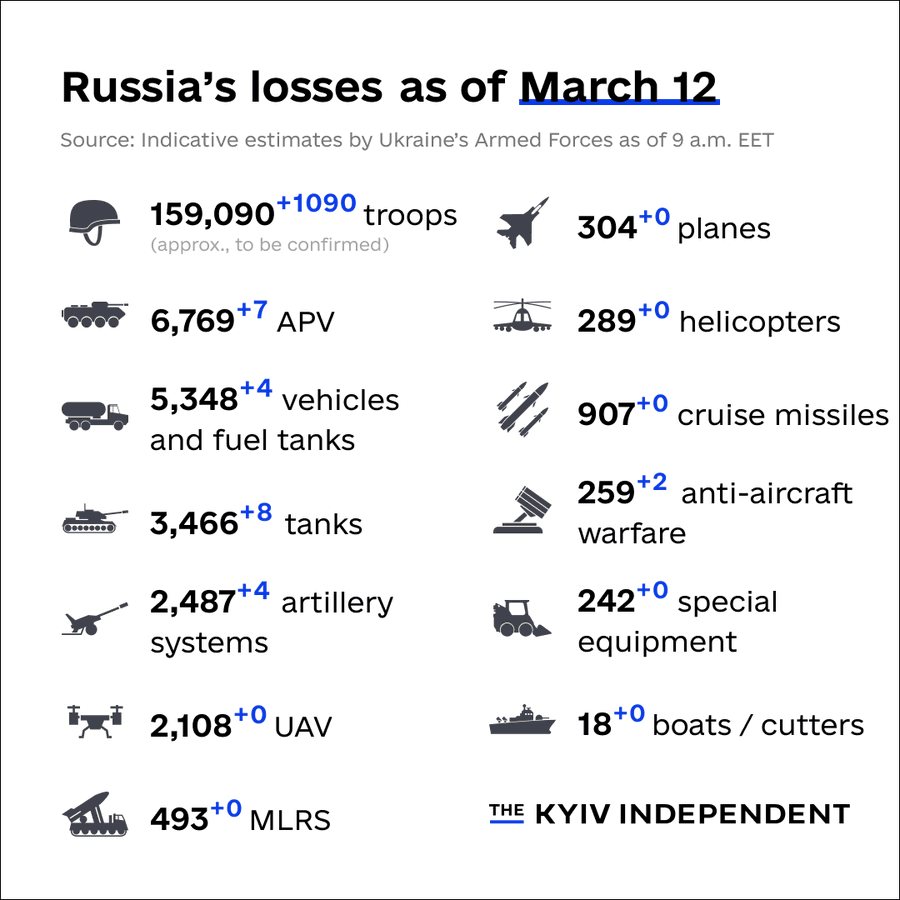Why are Russian draftees suddenly publishing so many video pleas to Putin? Why do they complain about their own circumstances and not about the war against Ukraine? The independent Russian website iStories looked into the situation and discovered that there are not enough Donbas local draftees left, so it’s Russians’ turn to go.
Since the start of 2023, Russian draftees have released numerous public video statements in which they complain about being assigned to units based in the so-called 'Donetsk People’s Republic' and sent into battle with inadequate training, insufficient supplies, and poor service conditions. According to military analysts, there’s a reason these public appeals have suddenly become so frequent: it used to be Donbas local draftees who were sent on these missions, but now there are few left, so it’s Russians’ turn to go. The independent news outlet iStories looked into the situation. Meduza is publishing a lightly abridged translation of their report.
After the occupation of eastern Ukraine in 2014, the Russian authorities created two military corps in the Donbas, military expert Kirill Mikhailov told iStories. The first corps included most of the units from the 'Donetsk People’s Republic,' and the second included most of the units from the 'Luhansk People’s Republic.' The primary difference between these units and the Russian army proper was that the Donbas corps were given outdated hand-me-down equipment, such as T-64 tanks.
According to Ukrainian intelligence, both corps answered directly to the 8th Army of Russia’s Southern Military District, which is located just east of the Ukrainian border. After Russia’s annexation of Ukraine’s partially occupied regions in September 2022, these corps were officially incorporated into the Russian army. Both are also referred to as 'people’s militias': the first corps is the DNR People’s Militia, and the second is the LNR People’s Militia.
Even before Russia launched its full-scale invasion of Ukraine, these “people’s militias” had significant personnel shortages, according to Mikhailov; some units were only 50 percent staffed. To address this problem, occupation authorities declared a general mobilization on February 23, 2022, and created several additional motorized rifle regiments. After the invasion, the units were supplemented with convicts from prisons on the occupied territories. Weapons were scarce; some draftees were given Mosin–Nagant rifles, which were officially removed from service after World War II.
People’s militias at war
At the start of the war, the Donbas “people’s militias” were more combat-ready than the Russian army, according to Mikhailov. In addition to being more experienced than their Russian counterparts, soldiers in the “people’s militias” were more motivated on average; while their salaries had always been lower than those of the rest of the Russian military, Mikhailov said, they were driven to fight by their convictions, not by money.
One of the LNR and DNR armies’ tasks is to attack the Ukrainian military’s positions constantly along the “old” line of contact in order to tie down Ukraine’s forces there. This often requires advancing without support from artillery and armored vehicles, both of which are in short supply, leading to heavy losses.
When manpower from the occupied territories eventually ran out, the Russian military began replacing it with draftees from Russia. The result is that their combat capability is now as low as the other units of the Russian army that are being supplemented with draftees, according to Mikhailov.
'Previously, Donetsk and Luhansk draftees were being used as expendable materials; now it’s Russian ones. They can’t fight any other way. If they don’t fundamentally change their approach, which I doubt they will, then the Russian draftees will continue to die like this,' he told iStories.
Matveyev agrees: Russia’s military command will likely continue using Russian draftees to launch assaults on Ukraine’s positions in the Donbas.
Russian draftees speak out
The most high-profile instance of soldiers in the Donbas corps complaining about combat conditions came from draftees from the Irkutsk region. Here’s how it unfolded.
January 24 — The draftees’ first video statement. Draftees from Russia’s Regiment 1439 say that they were trained to serve as territorial defense but were then “thrown into an assault group” on the territory of the “DNR.” According to the soldiers, two men from their ranks were killed and 19 were injured in just two days. They claim they don’t belong to any military unit, they buy their own food, and pay for their own medical treatment.
February 25 — The draftees’ second video statement. Draftees say they’ve been transferred to the “DNR’s” First Slavic Brigade, which is a part of the “People’s Militia.” In a single day, they say, they were divided into “assault brigades” and sent “to the slaughter” — to storm Ukrainian positions in Avdiivka. Anyone who refuses to join the “assault brigades,” the draftees claim, is “shot from assault rifles and BMPs [infantry fighting vehicle].” They say that one of the battalions from their regiment has been “practically completely destroyed.”
February 26 — Irkutsk Governor Igor Kobzev responds. In a Telegram post, Irkutsk Governor Igor Kobzev says that the draftees will soon be transferred “'o a new duty station.'
February 27 — The draftees’ third video statement. Soldiers complain again that they’re being sent to launch assaults with no training and that their superiors have threatened to charge them with desertion or send them on offensives that are suicide missions. A deputy commander who tried to intercede on their behalf, they say, was detained and taken away.
March 3 — Relatives say Regiment 1439 has been ‘destroyed’. The regiment is reported to have been almost completely wiped out. The draftees’ relatives tell the news outlet Siber.Realii that the regiment was 'practically destroyed' after launching an assault on Ukrainian fortifications in Avdiivka. 'We only know of two injured soldiers; the rest were either killed or were left there in dire positions,' one woman says.
That same day, a delegation of representatives of the Irkutsk regional government and veterans of the Soviet–Afghan War and the Chechen Wars visit the DNR. According to Irkutsk Governor Igor Kobzev, their goal is to 'establish cooperation' with the regiment.
March 5 — Authorities deny the reports. The head of the delegation, Yakov Mindrulev, says the reports of heavy losses in the regiment are false. 'A large number of our guys are alive and in good health,' he writes on Telegram.

Russian losses according to the Ukrainian government. Graphic by The Kyiv Independent
Combat without training
However, draftees from other regions who have been sent to serve in DNR units have complained about their commanders and service conditions as well.
On March 4, draftees from Russia’s Orenburg region said that People’s Militia commanders are using them as 'cannon fodder.'
On February 18, draftees from the Tomsk region say their commanders began retraining them from artillery gunners into infantrymen after they were sent to join the DNR army. 'After several trips [to the training center], they started demanding money for gas. If we refused, it would mean that we didn’t need training and that we were ready for combat on the front lines,' said one.
Earlier in February, draftees from the Tyva Republic said that soldiers from the DNR beat them and shot at them from machine guns.
On March 7, draftees from the Kaliningrad, Murmansk, and Arkhangelsk regions said that commanders from the fifth DNR brigade made them launch a 'head-on' assault. They also threatened anyone who complained with imprisonment in a basement, according to the soldiers.
That same day, draftees from Russia’s Belgorod region reported that they were taken to Donetsk, forced to enlist in the DNR corps, and sent to launch an assault with no training. They said that the 'DNR militiamen' took their military IDs.
Deployed as ‘meat’
According to Maria (name changed), a family member of one of the draftees whose military ID was taken, the group to which her relative belonged included soldiers from the Belgorod, Kursk, Bryansk, and Voronezh regions. At their training center, the men were told that they had landed in the right place if they didn’t want to fight; their commanders promised to put them in a rear-guard territorial defense company. 'Our guys had three trips to the training firing range, one of which was for a medical [exam] and one of which was for strategy [training], meaning they just ran around the forest. The third time, they […] threw a grenade, and that was it. In other words, they never once fired weapons [before deploying],' she said.
In late December, the draftees were sent to the Belgorod region, where they were initially assigned to the territorial defense force, said Maria. Soon after, however, the unit was transferred to the Southern Military District, where they were told they would be sent to Rostov-on-Don. 'They were promised that they would undergo additional training since they weren’t a combat-ready regiment. [But] when we got in touch with them, we realized that they were being sent not to Rostov but […] to the DNR,' Maria said.
'Today, they contacted [us] and said that they’ve been assigned to an assault [brigade]. Nobody from their [command] listens to them when they say that they’re not trained. […] Signalmen, drivers — everyone was put in the assault [brigade]. They were sent there to be meat,' Maria said.
The full original report by iStories is published here.
The lightly abridged translation is published here at the site of Meduza.

